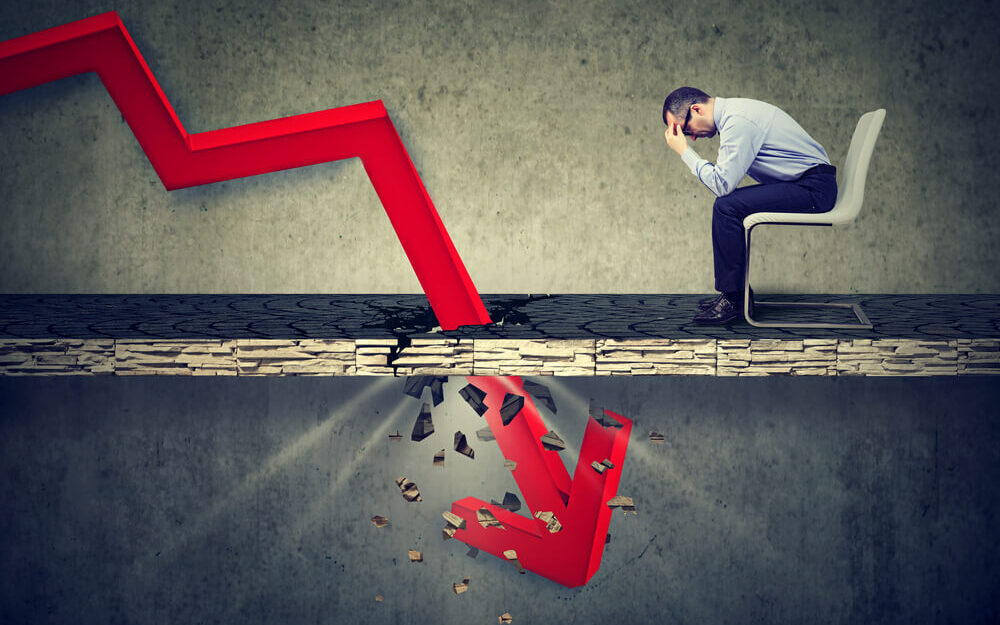The war in Ukraine is scary, and the market sell-off it’s triggered is right there with it.
This is the first time we’ve seen a European war of this size and scale since World War II, a time when most of us weren’t yet born.
But if you’re concerned about your portfolio landing in the crossfire as the conflict goes on … well … you’re doing it wrong.
I’m not suggesting that your investment strategy should always be to buy, hold and hope for the best. But no one should lose sleep wondering how the events in Ukraine will affect their investments.
And if you are, let’s fix that.
How to Invest During a Market Sell-Off
Step One: Get Over Getevenitis
The first lesson is the most critical.
While the market sell-off of the past two months has been gut-wrenching, the S&P 500 is only down about 12% from all-time highs.
If you’ve been invested for longer than 4-5 months, chances are good that you’re still sitting on profits. You can sell, or at least reduce your positions, and still walk away ahead.
But you need to resist the pull of “getevenitis.” It’s a disease that all investors suffer from, and if you’re not careful, it can wreck your portfolio.
Getevenitis is that urge to wait until you’re back at breakeven to sell.
No one likes to lose money. It’s painful, and apart from the monetary losses, it’s a blow to the ego. But selling early is the key to ensuring that small losses stay small.
Do you suffer from getevenitis?
If you’re too heavily allocated to stocks, don’t be afraid to take some money off the table.
Remember, stocks started 2022 priced for perfection. That rosy scenario was already questionable even before the Russian tanks moved in.
High prices and euphoric sentiment are always a risky combination, particularly when the Federal Reserve is working hard to drain the excess liquidity that has fueled that exact sentiment.
Step Two: Get the Allocation Right
Step one is more of a mental preparation than anything else.
Step two is where you need to take action.
Take a look at your portfolio and ask yourself about each position:
- Why do you own what you own?
- What is your price target?
- What is your exit strategy?
If you can’t answer those questions, then you have no business holding the positions.
Looking at the big picture, the standard rule of thumb is that your allocation to stocks should be along the lines of 100 to 120 minus your age. So, if you’re 60 years old, 40% to 60% of your portfolio should be in stocks.
Take rules of thumb with a grain of salt, of course. These are not ironclad laws of physics or religious dogma.
But if your allocation is much different than the rule of thumb, ask yourself why. If you don’t have a good answer, you’re taking on too much risk.
Step Three: Think Like a Trader
There is a common belief that trading is riskier than long-term investing.
Well, that’s ludicrous. Trading is by no means riskier, assuming you have risk management in place and you follow your own rules.
Think about the last major bear market during the global financial crisis of 2008. Buy-and-hold investors saw their stock portfolios drop by more than half. But an active trader could have made money throughout the period by making short-term moves and taking profits.
Now, do I believe today’s market sell-off will slide into a rout like 2008?
No, I don’t. At least not yet.
I expect volatility to continue as the market tries to digest the Fed’s efforts to tame inflation along with the still unknown effects of Cold War 2.0.
But in that volatility, I also see massive opportunity. Which is why you should check out my colleague Adam O’Dell’s premium stock research service Home Run Profits.
Adam’s subscribers just locked in a 500% gain on the final third of their position in an oil giant — after only three months! They sold the first two-thirds of the position for 60% and 100% profits, too!
Since 2022 started, 13 of 15 closed trades in Home Run Profits were for positive gains — all while the broader market sold off.
Click here to see how Adam does it.
To safe profits,
Charles Sizemore Co-Editor, Green Zone Fortunes
Charles Sizemore is the co-editor of Green Zone Fortunes and specializes in income and retirement topics. He is also a frequent guest on CNBC, Bloomberg and Fox Business.
